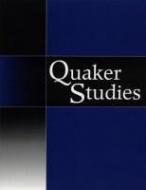
Abstract
In 2003, Grace Jantzen presented the George Richardson Lecture, the annual international lecture in Quaker studies, entitled 'Choose Life! Early Quaker Women and Violence in Modernity', which was published in Quaker Studies. It was part of her ongoing work on the preoccupation of modernity with death and violence. In the lecture she argued that Margaret Fell and most other early Quaker women encouraged a choice of life over a preoccupation with death, while most male Friends (as Quakers are also called) maintained the violent imagery of the Lamb's War, the spiritual warfare that would usher in the kingdom. While both men and women developed what became the Quaker 'peace testimony' (the witness against war and outward violence), the language used by male and female Friends differed in its description of the inward spiritual life and its consequences and mission. Thus, Grace Jantzen argued that these women Friends were choosing a language counter to modernity, while the male apocalyptic was indeed counter-cultural but still within the frame of modernity. In this article, we take Grace Jantzen's basic thesis, that a female 'Choose Life!' imagery may be set against a male 'Lamb's War' metaphor, and apply it to four sets of Quaker data in other geographic and temporal locations, to explore the extent to which the arguments she sets out can usefully illuminate the nature of Quakerism. This four-fold approach highlights the complexity of the history of Quaker discourse, as well as the continually shifting cultural and social contexts in which Quakers necessarily found themselves embedded. It also brings to the fore how useful an analytical tool Grace Jantzen has given us and not only in situations where we come to agree with her conclusions.
Recommended Citation
Dandelion, Pink; Hagglund, Betty; Lunn, Pam; and Newman, Edwina
(2009)
"'Choose Life!' Quaker Metaphor and Modernity,"
Quaker Studies: Vol. 13:
Iss.
2, Article 3.
Available at:
https://digitalcommons.georgefox.edu/quakerstudies/vol13/iss2/3
